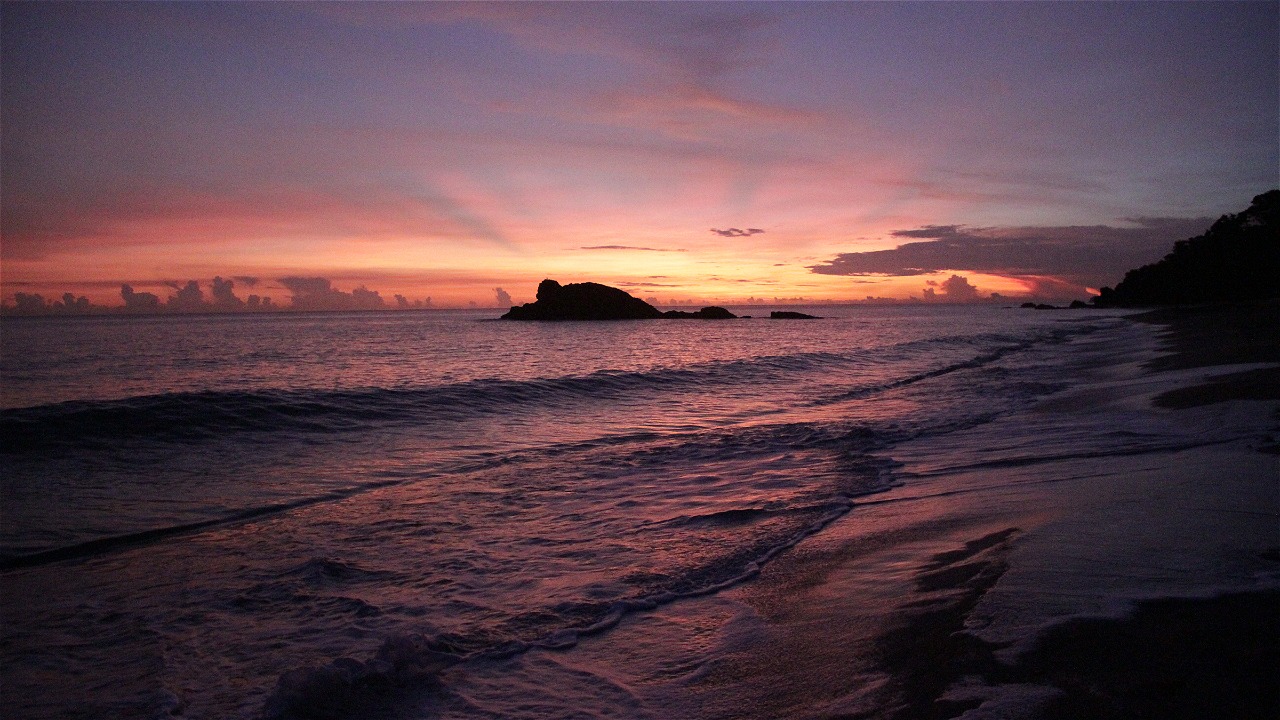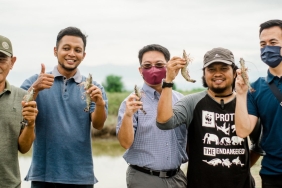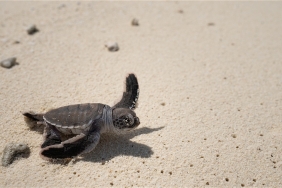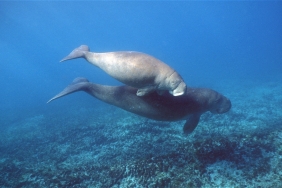RESPONSIBLE MARINE TOURISM PROGRAM WHERE INDIGENOUS MEETS TOURISM AT KATALOKA
By: Indarwati Aminuddin (WWF-Indonesia)
Kataloka State is an area with a coverage of 14 hamlets on four large islands namely Koon, Gorom, Grogos and Nukus Island. A total of 5,742 people live in Kataloka Sub-district, the capital of Kataloka State. Koon Island, which is the cruise ship stopover area, is a water area with 2,479.45 hectares of empty islands. In the reality of the long history of the seaborne struggle for spices, Koon Island barely appears on the map, but it cannot be ignored that Koon Island and its surrounding area have established Maluku as a spawning area for sunu grouper, red snapper, tiger grouper and big-eye bobara, and made this area a location that illustrates Indonesia's food health. Now, a new chapter for Koon Island is emerging in the form of alluring marine tourism.
***
It is not easy to reach Koon Island in East Seram, Southeast Maluku. For the adventurous, the best way is by sea on a cruise-live aboard, via a route from Sorong, to Raja Ampat and onward to Banda waters in Ambon. Another alternative route is by land from Ambon-Seram Bagian Timur-Bula and Gorom Sub-district which is the gateway to Koon Island. Under normal weather conditions, the journey could take two days, whereas during the rainy season, there is little chance of getting through Gorom Sub-district. In total, it takes 33 hours to reach Gorom.
Prepare for a few surprises (not all of them pleasant). Beyond the beauty and cultural significance, a major challenge of Koon tourism is limited access and infrastructure. Gorom is an area that 'casts' memories back in time. Small beachfront shops, houses with big windows, fishermen passing by with fish in hand, the smell of cloves and nutmeg on street corners, and overseas traders who speak the local language. Gorom illustrates one thing for sure: everyone hustles and works hard here.
The majority of Gorom residents work as fishermen and farmers. In May 2014, I had the opportunity to visit Gorom and saw that hereditary customs encourage each person to limit themselves when utilizing their natural resources. Thick traditions can be seen in land ownership, the right of residents is to use, utilize and care for the land without having to own it. Natural resources are abundant in almost all seasons, cloves, nutmeg, cocoa, coconut, durian, sago and mango.
Every resident has at least 5 of these fruit trees, either in their garden or yard. The majority of the food on the table comes from a long tradition of natural resource management. While millions of people around the world struggle with food products that have traveled long distances, often across countries, the people of Kataloka have no problem with food availability. What is the recipe for this availability of land and sea food products? Preservation.
Instead of calling it preservation or conservation, the people of Petuanan Kataloka have for generations been bound by customary principles in utilizing their resources. Petuanan Kataloka's territory is governed through customary institutions with the highest leadership of Raja Kataloka, Drs Mohammad Syaiful Akbar Rumarey Wattimena, followed by three other viceroys. The Raja of Kataloka has the power to permit the utilization and closure of an area (sasi) for a certain period. The people of Kataloka practice what is called 'using moderation' and adhere to adat and culture in the management of aquatic and terrestrial natural resources in Kataloka.
The origin of Kataloka
In the records of the young king of Kataloka, Anzar Wattimena, the land of Kataloka is told as an area developed by Basora and Loeminina - women from the sea, where both took shelter under a golden coconut tree in Tanusan (sand that rises and sinks in the middle of the sea). From these two, generations of Kataloka are believed to have emerged. In the ninth generation, the descendants of Basora and Loeminina moved to another place called Gorium-now known as Gorom-and produced another generation. The people I met in Gorom today are the 15th generation. But there is also another version of the origin of Kataloka, which comes from Tiu Rumaderun, which is in the form of a lake. Kataloka comes from the word Ataloa which means 'above'. Until now, 11 kings have ruled Kataloka. As a traditional country, Kataloka has a traditional country flag which unfortunately can no longer be seen. The shape and image of the flag was found in a Dutch museum. Residents in the country of Kataloka have known education since 1950 and it developed rapidly with the 10th King of Kataloka, Ratu Abdul Azis Rumarey Wattimena.
As the successor of Ratu Abdul Azis Rumarey Wattimena, King Syaiful's task is to continue the good things that his predecessor has done. "Improve education and serve the people," he said. He always remembers his father's actions, encouraging Gorom residents to go to school so they could face the changing times. Of course, being the king's successor places him as the 'busiest man' in overseeing natural resources, and understanding the aspirations of the people of Petuanan Kataloka. In July 2014, a drunken youth accidentally bumped into Raja Syaiful during a folk dancing party. The offense was clear: not understanding manners. In no more than 24 hours, the young man's family came to see the king, apologized, and as punishment the young man was obliged to clean the village land for a month. The story of the drunken man is only a small part of the king's business. The king also dealt with the chaos caused by the unauthorized entry of fishing boats into Koon waters, received reports of fish bombing and recorded the traffic of cruise ships stopping by.
Marine Resources and Tourism
In 2011, the abundance of fish surprised divers traveling through Koon on their way to Raja Ampat Papua. Live-aboard called Koon 'too many fish' waters (visit http://www.cityseahorse.com/banda-sea-diving.html), or "After back-rolling in you will drop down into warm, clear and shallow waters where the reef flat rises to 5 metres below the surface and from here, begin your descent down the wall. The ever-present current will guide you gently along the reef to your right as the wall comes to a point. On the wall you can expect the larger life to include dog-toothed tuna, schooling barracuda and jacks." (See http://www.dive-the-world.com/diving-sites-indonesia-banda-islands.php). In 2014, it was recorded that around 12 liveboards stopped by Koon waters.
The contribution of liveboards to Gorom residents has yet to be seen directly, given the lack of guest visits to Gorom communities and beyond. Although basically, half of the live-aboards have no objection to paying entry fees to Petuanan Kataloka for permission to use its waters.
"However, we don't want to receive funds just like that without a clear management program," said Raja Muda, Dr Anzar Wattimena. There are other challenges that need to be resolved, "we want the communities on land to be adequately prepared to receive guests, and not suffer from cultural shock and surprise at the changes that arise," he explains. Raja Anzar sees a fresh breeze for the tourism business in Kataloka, even with a series of problems; access, isolation, lack of facilities and infrastructure and lack of capacity for managing tourism product products.
Departing from these various reasons, in 2011, WWF-Indonesia collaborated with Petuanan Negeri Kataloka to encourage the effectiveness of conservation management through financing cruise ship entry into Koon waters. The idea; cruise ship entry fees are utilized to develop local community-based tourism and as funds for conservation management. The idea was welcomed by the Indonesian Cruise Network. "This role sharing makes sense. I don't see any reason to reject the idea of an entry fee for this purpose," said Suryani Mile, Indonesian cruise coordinator.
For the young Raja of Kataloka, Anzar Wattimena, the idea is like a new 'door' for the Kataloka community. "This area has been guarded for generations by the people of Kataloka. We are open to new things, and convince ourselves that the benefits of tourism have a positive impact on the community," he explains.





